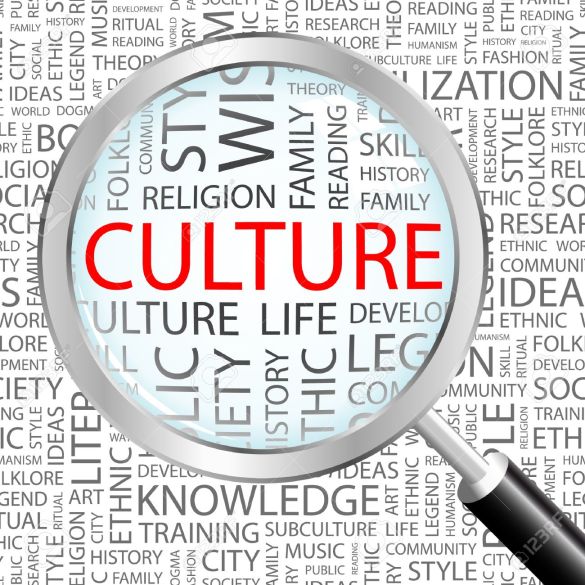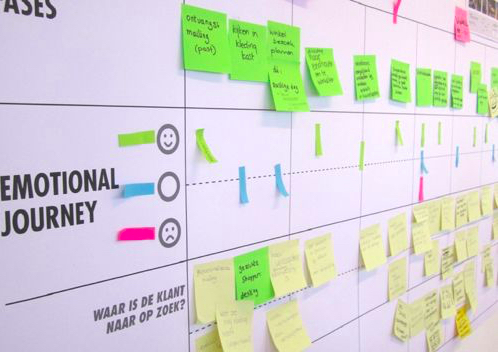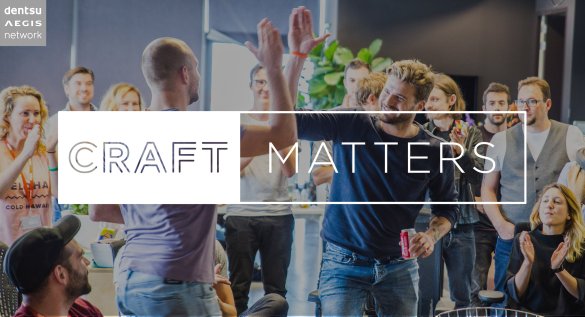 As a Chief Digital Officer (CDO) I live every day at the intersection between technology and culture and how it drives change in a company or organization.
As a Chief Digital Officer (CDO) I live every day at the intersection between technology and culture and how it drives change in a company or organization.
The powerful breakthroughs in computing, smartphones, and telecommunications have seen massive adoption of broadband, mobile, and e-commerce systems, resulting in a real-time buy and sell channels that have changed customer experiences forever.
How a company moves to embrace the opportunity, I tend to first look at the company culture.
Companies born in the pre-digital era always need much more adjusting or shift in their organizational culture to keep up with today’s digital disrupted world.
Company culture reflects an organization’s deepest and most tightly held beliefs and values. Those beliefs and values have had years and often decades to become deeply entrenched and often played a significant role in why the organization reached its level of success in the first place.
Thinking these beliefs and values can be easily changed is a fool’s errand.
As a CDO I am regularly tasked with moving companies into the digital age via newly created customer first strategies, go to market programs and mobile first engagement platforms.
With this role, I have often underestimated an organization’s ability to change quickly and get surprised with a push back when the culture rejects the new way of doing things.

Frankly, it depends greatly on what business vertical and industry I have been being invited to operate a digital transformation within.
If it is an industry with a short fuse, big bang disruption like travel, finance, retail, professional services, media, and telecommunications. These industries like our very own advertising industry are seeing the explosive and immediate impact on traditional business models.
The company resistance to embracing a digital transformation is often culture driven as their deepest soul still thinks the old days of working are still more relevant than not.
Big bang digital disruption is a force that rocks the foundations of a business and many times over I see the management teams while seeing change coming were not prepared and or willing to adjust and invest quickly enough.
Other times I find myself operating in a vertical grouped where a longer fuse, big bang digital disruption is occurring, and here you find applying digital transformation strategies, tends to move towards cost efficiency to be the key drivers. Industries such as auto, FMCG, education, health, transport, agriculture and utility sectors.
While all industries are being disrupted because of the Internet, you need to call on all your experience to drive the right amount of velocity to apply to the proposed transformation assignment, so the customer engagements paths and new revenues proliferate rather than become restricted because the disruption has taken a front seat.

These velocity decisions impact how tasks are conceived, led and resourced and in many cases how you recommend culture change management on how to nurture the digital transformation program.
The understanding of how this works results in many new and exciting ways to engage with customers. Especially thinking on a global scale, rather than the traditional local market level which often conflicts with many organizations operating structures.
Digital transformation should always look for programs that increase automation and gather and analyze unprecedented amounts of data so they can stay relevant in a competitive global market.
While cost efficiencies are necessary strategies, the digital transformation program must have the core goal to deliver customer acquisition, engagement, and usage. The program should be developed to have milestones on customer interaction. The program should look to be finding constant improvements. In the early days, it is about the test, learn, implement and scale quickly.
This combination means there are a vast array of capabilities and skills required to stitch together a large-scale audience led digital transformation and ultimately Dentsu Aegis is well positioned within our various agency capabilities to lead clients.
I find the leader of a digital transformation program must have a clear customer-centric upbringing. Ideally spent their entry career creating compelling stories across many different types of media channels, and were brought up on design thinking approaches and techniques, that can then be fused to screen customer first approaches, tracked to agreed business models and defined audiences and financial plans. Yes, you need to be able to communicate and action all of this to have a successful digital transformation agenda.
A find the leader of a digital transformation must also have a passion for the arts blended with a scientific method mindset to use the tools of the day, but also be innovative always to be looking ahead to find an edge.
Successful digital transformation approaches often start a life launched from innovation labs. As a CDO I find digital transformation strategies should be ‘story told,’ must always be mindful and have an understanding these stories impact others. Their client’s staff, their friends, and their customers.
I also find it essential to communicate the understanding of what drives a new culture as well as the opportunity. Culture always trumps strategy, so any digital transformation strategy has to be collaborative at all times seeking out digital artisans and change agents for both the client, the agency/service provider and the end customer.
To bring to market a digital transformation program I find a successful technique is to foster a partner ecosystem for co-innovation and co-creation. The team that is created for the assignment must also give the project leads and middle managers latitude to fail fast so they can learn even more quickly.
In summary, it’s not the technology that drives change, but rather companies don’t allow legacy culture to slow down a digital transformation in a fast-moving digital economy. That is, companies must become disruptors or risk being disrupted.
Companies need a culture of speed, agility, innovation, constant learning, and mindfulness.
 A constant theme in my professional life that I openly express to clients, and also write about on this blog is how technology and digital channels continue to drive people to become more demanding of brands and businesses.
A constant theme in my professional life that I openly express to clients, and also write about on this blog is how technology and digital channels continue to drive people to become more demanding of brands and businesses. When I first joined the world of advertising many moons ago, the purpose, the business discipline and group of people who worked in and around it had a mindset geared towards trying to create a brand to reach a maximum audience.
When I first joined the world of advertising many moons ago, the purpose, the business discipline and group of people who worked in and around it had a mindset geared towards trying to create a brand to reach a maximum audience.












 The offices will also host Isobar NowLab, iProspect VoiceLab, and Global Data Innovation Centre to explore new emerging technologies and equip Dentsu Aegis Network with the necessary tools and capabilities to navigate through the digital economy successfully.
The offices will also host Isobar NowLab, iProspect VoiceLab, and Global Data Innovation Centre to explore new emerging technologies and equip Dentsu Aegis Network with the necessary tools and capabilities to navigate through the digital economy successfully.






 As a Chief Digital Officer (CDO) I live every day at the intersection between technology and culture and how it drives change in a company or organization.
As a Chief Digital Officer (CDO) I live every day at the intersection between technology and culture and how it drives change in a company or organization.
